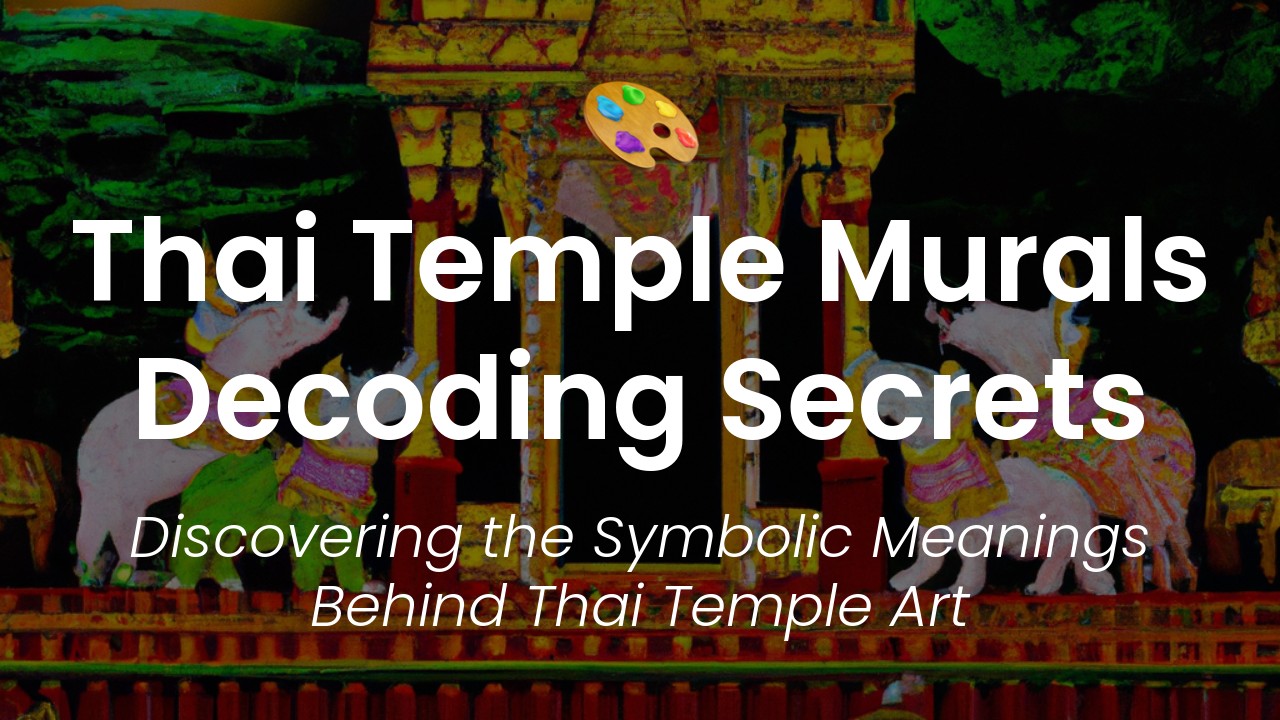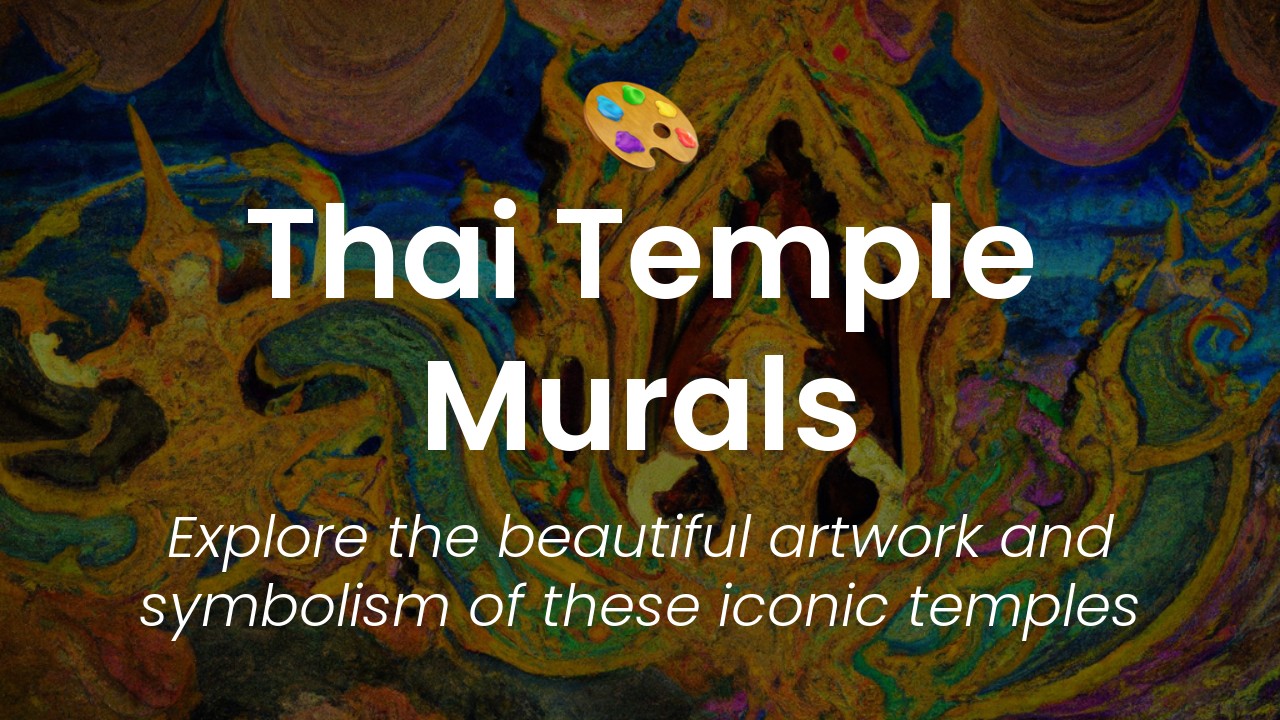Being born and raised in Thailand, I have always been fascinated by the intricate and colorful designs of Thai temple roofs. These temples are an integral part of our cultural heritage and offer a glimpse into Thailand’s rich history. Each temple has its unique design, pattern, and stories that add to the charm and beauty of the temple.
Here in Thailand, we take pride in our beautiful and ornate temple designs that have become synonymous with our identity. Visiting a Thai temple is an unmissable experience that allows you to immerse yourself in our vibrant culture and history. In this blog post, I would like to take you on a journey to explore some of the most stunning temple roof designs in Thailand.
From the intricate, hand-carved wooden structures to the colorful and elaborate tiled designs, Thai temples are true masterpieces that showcase our country’s artistic excellence and creativity. As you walk around the temple grounds, you will be transported to a bygone era of Thai art and architecture, and you will be amazed by the level of detail and craftsmanship that went into creating these magnificent structures.
So, if you are a culture enthusiast and want to discover the beauty of Thai temple architecture, then join me as I take you on a tour of some of the most spectacular temple roofs designs in Thailand. Buckle up and get ready to explore how these stunning structures contribute to preserving our rich cultural heritage.
The significance of temple roofs in Thai culture
Thailand is a country steeped in history and tradition, and a visit to any of its many temples or wats is an opportunity to immerse yourself in this rich cultural heritage. One of the most striking features of Thai temples is their intricate and ornate roofs, which often feature colourful patterns, detailed carvings, and shimmering metallic accents. These roofs are not just decorative, however – they also hold deep religious and cultural significance for Thai people.
In Thai Buddhism, the symbolism of temple roofs goes back many centuries. The main purpose of the roof is to protect the temple's central shrine or "bot" from the elements, but beyond that, the design and ornamentation of the roof is intended to reflect the grandeur and complexity of the Buddhist cosmos. Buddhist cosmology divides the universe into thirty-one planes of existence, and traditional Thai temple roofs are designed to represent each of these planes in intricate detail. From the outermost layer of the universe to the innermost sanctum of the temple, every element of the roof design is carefully crafted to reflect the grandeur and complexity of the Buddhist worldview.
The unique elements of Thai temple roofs
There are a few key features that are typically found in traditional Thai temple roofs:
Multi-tiered design
Most traditional temple roofs in Thailand are designed to have multiple tiers, with each tier representing a different level of the universe as described in Buddhist cosmology. The lower levels of the roof may be decorated with more earthly motifs, while the upper tiers may incorporate celestial themes like stars, clouds, or celestial beings.
Intricate carvings
One of the most striking features of Thai temple roofs is the intricate carving work that can be found throughout. Intricate figures of people, animals, and mythical beings are often carved into the wooden beams that support the roof structure, and these figures may be gilded with gold leaf or painted in vivid colours.
Decorative elements
Beyond the carvings, Thai temple roofs also feature a variety of decorative elements like ceramic tiles, ornate gables, and wooden finials. These elements may be arranged in intricate patterns or designs that reflect the religious or historical significance of the temple.
Shimmering accents
Many Thai temple roofs feature accents or highlights that shimmer in the sunlight. This may be accomplished with materials like gold leaf, glazed ceramic tiles, or even small pieces of mirror or glass. These accents can give the temple roof a breathtaking sparkle and shine under the right lighting conditions.
Examples of stunning temple roof designs in Thailand
There are countless examples of stunning temple roof designs to be found throughout Thailand, each with its own unique features and design elements. Here are just a few examples of temples with particularly impressive roof designs:
Wat Rong Khun (White Temple)
Located in the northern province of Chiang Rai, Wat Rong Khun (also known as the "White Temple") is a strikingly beautiful temple that incorporates modern design elements into its traditional architecture. The temple's main prayer hall features an incredible roof that appears to be made of shimmering glass, with metallic accents that give the entire structure a surreal appearance.
Wat Phra Si Sanphet (Temple of the Holy, Splendid Omniscient)
Located in Ayutthaya, the ancient capital of Siam, Wat Phra Si Sanphet is a temple with a long history and a breathtaking roof design. The temple's three chedis (stupas) each feature ornate roof designs with intricate carvings, gilded details, and architectural flourishes that evoke the grandeur and majesty of ancient Siam.
Wat Arun (Temple of the Dawn)
Located on the banks of the Chao Phraya River in Bangkok, Wat Arun is a temple with a distinctive pointed prang (tower) that soars into the sky. The prang's roof is covered in glazed ceramic tiles in various shades of green, blue, and orange, with intricate patterns and designs that seem to shimmer in the sunlight.
Tips for experiencing Thai temple roofs in person
If you're a culture enthusiast planning a trip to Thailand, exploring the many stunning temple roofs throughout the country is an absolute must. Here are a few tips to make the most of your temple-roof-exploration:
-
Wear comfortable shoes: Many temple roofs require climbing multiple flights of stairs or steep inclines, so it's important to wear comfortable and sturdy shoes.
-
Bring a camera: You'll want to capture the intricate details and colours of the temple roofs, so don't forget to bring a camera with a high-quality lens.
-
Respect local customs: When exploring temples in Thailand, it's important to dress appropriately (with covered shoulders and long pants or skirts), remove your shoes before entering any prayer halls, and be respectful of local customs and beliefs.
- Bring sunscreen and water: Temple roofs can get quite hot and exposed to the sun, so be sure to bring sunscreen and plenty of water to stay hydrated.
In conclusion, Thai temple roofs are not just beautiful, they are also rich with meaning and symbolism. Exploring these stunning designs is a unique and immersive way to experience Thai culture and spirituality, and should be on the must-see list of any culture enthusiast visiting Thailand.





